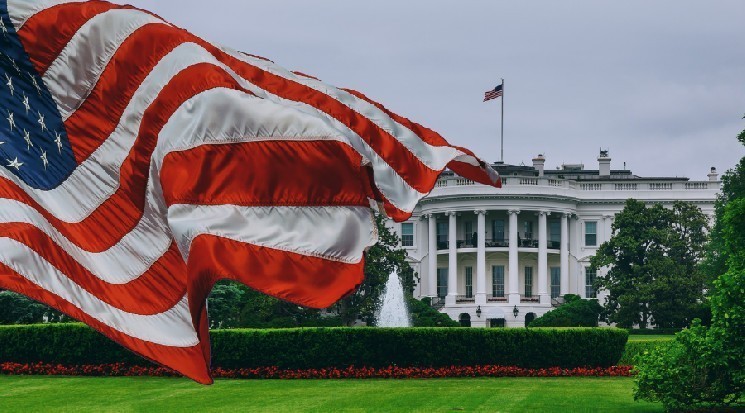White House Crypto Advisor Outlines Strategic Bitcoin Reserve and Regulatory Priorities
White House Makes Crypto Policy a Top Priority Under New Leadership
In a significant move that underscores the evolving relationship between government and digital assets, White House cryptocurrency advisor Patrick Witt has outlined an ambitious agenda for the administration’s approach to blockchain technology and digital currencies. Speaking at the prestigious South Korea Blockchain Week 2025 conference, Witt detailed plans that could fundamentally reshape America’s cryptocurrency landscape, with particular emphasis on establishing a strategic Bitcoin reserve and pushing forward comprehensive market structure legislation.
Witt, who stepped into the role after his predecessor Bo Hines departed to join stablecoin giant Tether, has wasted no time in articulating the administration’s vision for cryptocurrency policy. His appointment signals a continuation of the White House’s increasingly proactive stance on digital assets, reflecting the growing recognition of cryptocurrency’s importance to America’s financial future and technological leadership on the global stage.
Cryptocurrency Market Structure Bill Takes Center Stage in Legislative Agenda
The cryptocurrency market structure bill (MMBB) has emerged as a cornerstone of the administration’s digital asset strategy, with Witt expressing confidence that the legislation will reach President Donald Trump’s desk before the close of 2025. This comprehensive framework aims to provide much-needed regulatory clarity while creating a secure and transparent environment for cryptocurrency transactions across the United States.
“We are doing our best, we act as referees when there is an impasse, we intervene when necessary. We are trying to remove the obstacles in front of the bill,” Witt stated during his conference address. “We respect the process. We are optimistic that the bill will reach Trump’s desk and be approved before the end of the year.”
The MMBB represents an ambitious effort to consolidate various legislative initiatives currently at different stages of development, including the CLARITY Act and the GENIUS Act. By bringing these disparate elements together under a unified framework, lawmakers hope to create a coherent regulatory approach that balances innovation with consumer protection—a balance that has proven elusive in previous attempts to regulate the rapidly evolving digital asset space.
Cross-Branch Collaboration Accelerates Path to Regulatory Clarity
Witt emphasized that the White House is actively working in tandem with both chambers of Congress to expedite the legislative process. This coordination between the executive branch and legislators in both the House of Representatives and Senate reflects the increasingly bipartisan recognition that regulatory clarity for digital assets represents a national priority rather than a partisan issue.
The collaborative approach appears designed to overcome the legislative gridlock that has previously hindered cryptocurrency regulation. By positioning the White House as a facilitator rather than dictating terms, the administration seems to be cultivating the consensus necessary for meaningful progress. This strategy acknowledges the complex stakeholder landscape that includes industry participants, consumer advocates, and traditional financial institutions—all of whom have vested interests in the shape of any final regulatory framework.
Strategic Bitcoin Reserve Emerges as Bold Policy Initiative
Perhaps the most striking element of Witt’s policy outline is the administration’s intention to establish a strategic Bitcoin reserve. This proposal represents a dramatic evolution in governmental approaches to cryptocurrency, potentially positioning Bitcoin alongside traditional strategic resources like petroleum and precious metals in terms of national importance.
“The committee’s goals include accelerating the passage of digital asset legislation, establishing a strategic BTC reserve, clarifying cryptocurrency tax regulations, and protecting the rights of crypto technology developers,” Witt explained during his address. The inclusion of a strategic Bitcoin reserve among these priorities signals a significant shift in how the U.S. government perceives the flagship cryptocurrency—no longer merely as a speculative asset or potential regulatory challenge, but as a resource with strategic national value.
While details regarding the proposed reserve’s size, acquisition strategy, and management remain forthcoming, the mere acknowledgment of such an initiative represents a watershed moment in the relationship between government and cryptocurrency. It suggests an understanding that Bitcoin’s fixed supply and decentralized nature could serve national interests in an increasingly digital global economy.
Comprehensive Policy Framework Addresses Multiple Dimensions of Cryptocurrency Ecosystem
The administration’s cryptocurrency agenda extends well beyond the market structure bill and Bitcoin reserve initiative. Witt outlined a four-pillar approach that also emphasizes tax clarity and developer protections—areas that have long been sources of uncertainty within the digital asset ecosystem.
The focus on tax regulations addresses one of the most persistent pain points for cryptocurrency users and businesses alike. Current tax treatment of digital assets has been criticized for applying frameworks designed for traditional investments to the unique characteristics of blockchain-based assets. By prioritizing clarity in this area, the administration appears to recognize that tax uncertainty represents a significant barrier to mainstream adoption and compliant participation in cryptocurrency markets.
Equally noteworthy is the commitment to protecting the rights of cryptocurrency technology developers. This stance acknowledges the critical role of innovation in the blockchain space and suggests a regulatory approach that distinguishes between bad actors and legitimate technological advancement. For an industry where regulatory overreach has been a persistent concern, this explicit protection for developers could help maintain America’s competitive edge in blockchain innovation.
As these initiatives move forward, market participants and observers will be watching closely to see how ambitious policy goals translate into concrete actions. While Witt’s statements provide valuable insight into the administration’s priorities, the ultimate impact will depend on successful implementation across multiple government agencies and legislative bodies.
This article does not constitute investment advice. Readers should conduct their own research before making any investment decisions related to cryptocurrency or digital assets.


